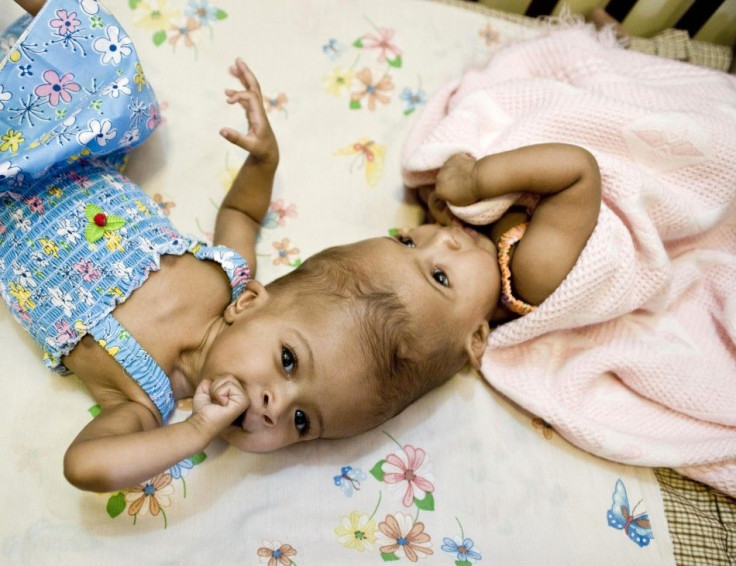Conjoined Twins Erin And Abby Delaney Recovering After 11-Hour Surgery At Philadelphia Hospital

Twin girls conjoined at the top of their heads were successfully separated after an 11-hour long surgery at a Philadelphia hospital Tuesday. Children’s Hospital of Philadelphia (CHOP) said sisters Erin and Abby Delaney are recovering following the procedure that was performed by a team of more than 30 doctors and nurses.
“Separating conjoined twins is a very complex surgery followed by a long and complicated recovery, but we are very hopeful for a positive outcome,” Dr. Jesse Taylor said in a news release, which was released after the hospital performed its first surgery for the least common type of conjoined twins. The condition of conjoined twins at the heads is known as craniopagus.
Read: Conjoined Twins: 16-Year-Olds Refuse Surgery Despite Health Concerns
The surgery was extremely complex as Abby and Erin shared key blood vessels and a protective membrane around their brains. Doctors said additional surgery is considered likely.
Heather and Riley, the parents of the 10-month-olds learned they were expecting conjoined twins about 11 weeks into the pregnancy, local news reports said. The North Carolina family reportedly came to Philadelphia after an ultrasound at 19 weeks revealed the extent of the irregularity. The girls were born 10 weeks prematurely in late July by cesarean section.
“When we go home, it’s going to be a big party,” their mother, Heather, said in a statement released by the hospital as she expects to bring the girls back to North Carolina later this year. “Welcome home, baby shower, first birthday.”
While talking about the procedure, co-lead neurosurgeon Dr. Gregory Heuer said: "During the separation surgery, our team first meticulously separated the infants' shared blood vessels and dura, the tough protective membrane surrounding both brains, then moved on to separate the sagittal sinus, the most difficult portion of the operation."
Philadelphia hospital successfully separates 10-month-old twins conjoined at the head https://t.co/BZj6zbSK2H pic.twitter.com/7wJHPi68su
— News 19 (@whnt) June 14, 2017
"Finally, we divided our team into two halves, one for each of the girls, and finished the reconstruction portion of the surgery," Heuer added.
Before the surgery, Erin and Abby received care at CHOP's Newborn/Infant Intensive Care Unit where teams of physical, occupational and speech therapists developed treatments and exercises for the infants while they were conjoined.
Read: Baby Dominique With 4 Legs, 2 Spines Out Of Operation
Craniopagus occurs in about 10-20 babies in every million births in the United States, reports state, accounting for just 2 percent of conjoined twins, most of whom are female and stillborn. One-third of craniopagus twins die within 24 hours of birth.
Last year, Children's Hospital at the Montefiore Medical Center in New York City separated Jadon and Anias McDonald after a complicated surgery. The McDonald twins, who were joined at the head as craniopagus twins, were separated after a 27-hour surgery. The twins were attached at the brain and the skull.
© Copyright IBTimes 2025. All rights reserved.





















